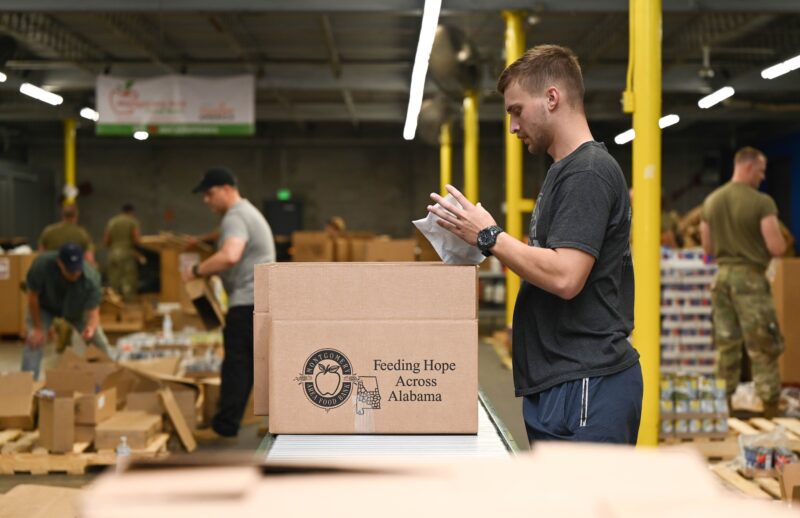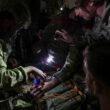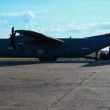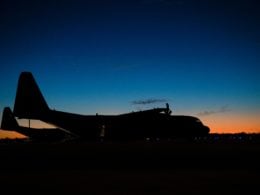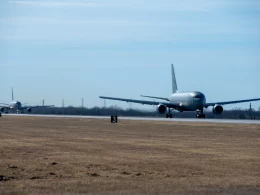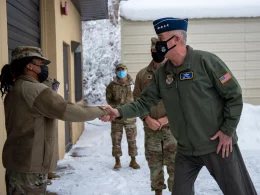MAXWELL AIR FORCE BASE, Ala. —
Training is a vital tool the Air Force uses to keep their Airmen fully operational, deployable, and mission ready. The 908th Airlift Wing is upholding those standards by ensuring their members are staying up to date with annual requirements, such as computer based and hands-on training.
As a Reserve wing, the bulk of training occurs during monthly Unit Training Assembly weekends. However, since January 2023, groups of 10-20 Airmen from the 908th Maintenance Group have been gathering for the week following UTAs to engage in block training.
Block training is a set schedule of events, classes, and exercises that occur Monday through Friday after a UTA weekend.
The proposition came about when 908th MXG leadership recognized the difficulties of completing training during UTAs and sought out a unique approach to getting their members more engaged and efficient in completing their tasks.
“This is our first time trying something like this, so everything is still under construction,” said 1st Lt. Terry Ruff, director of operations for the 908th Aircraft Maintenance Squadron. “We’re learning a lot about it. We’re adding new courses, taking courses out and planning for the future as we move along.”
By working in small groups, the MXG can maximize resources, allowing Airmen to concentrate solely on completing their readiness tasks and developing skills that keep them deployable and mission ready. Additionally, this dedicated week of training enables members to put 100% of their focus into their job during the UTAs.
“Before there was block training, we participated in what we called ‘Super UTAs’ where we would have four days of drill instead of two,” said Master Sgt. Samaletta Collins, the unit training manager for the 908th MXG. “This idea kind of phased out when Lt. Col. Stuart Martin wanted us to spend more of our time [during UTAs] training on our job requirements and what we will encounter once the MH-139 helicopters come.”
Martin corresponded with other key senior leaders in the group like Senior Master Sgt. Jason Carmack, the maintenance operations superintendent and Ms. Cythina Bailey, the unit deployment manager, to put together a schedule that consisted of training exercises and other activities to target areas of improvement across multiple disciplines.
“I believe having training in this format helps to accelerate and sustain readiness because everyone does it as a group,” said Carmack. “Doing it together creates a sense of teamwork and accountability that ensures every member finishes every task, every day.”
On the first day of block training, maintainers start off with a meet and greet with their group commander, where they get to know about each other’s background and the schedule of events for the week. After networking with each other, they review and discuss key takeaways from the Air & Space Forces Association’s Air, Space & Cyber Mobility Manifesto and then roll right into various briefings led by noncommissioned officers.
First, the Airmen get briefed on where to find important forms such as travel vouchers, orders and annual tour requests and the proper way to fill them out, as well as an overview of the UTA processing system.
Next, they learn about education benefits, leadership schools and academies, and job upgrade-training and core task requirements. They also went over details pertaining to on-the-job training and field training detachment opportunities, MH-139 conversion training, and deployment readiness.
“Being an instructor as well as a participant, I got to see how our fellow Airmen grasp this training from different points of views,” said Collins. “As the UTM, I was a part of developing the schedule for the week and identifying job requirements, but being able to participate gave me a better understanding, which helps me determine what needs to be incorporated or removed.”
Following the education and training brief, a safety representative for the 908th MXG, briefs them on hazard reports and supervisor mishap reports, which are forms they fill out if someone is injured.
Lastly, they attend a basic writing class, which covers the current format of enlisted performance reports, decorations and more.
“What’s really cool about block training is we’ll have senior leaders and officers like me that participate in block training, but we don’t actually facilitate,” said Ruff. “We use an up-and-coming Master Sgt. or Tech Sgt. so they can get some of that manager and supervisory experience, as well as have that familiarity from enlisted Airmen leading the class.”
On day two, members take their required Chemical, Biological, Radiological and Nuclear Defense Course led by emergency management analysts from the 42nd Civil Engineering Squadron.
For the first half of the day, the Airmen review detection and decontamination hazards, proper wear of personal protection equipment and steps to respond after an attack. For the second half, they simulate post attack reconnaissance teams, how to process through a contamination control area and the proper removal of mission oriented protective posture gear.
Day three calls for more hands-on training. The UDM usually works with the 908th Security Forces Squadron to get members in unoccupied seats for combat arms training and maintenance classes, where Airmen learn how to clear and handle weapons, as well as live-fire practice.
Those who don’t attend the CATM class practice other skills like cardiopulmonary resuscitation.
During the CPR certification class, Airmen go over how to save someone unresponsive, in cardiac arrest, choking, burning or experiencing life-threatening bleeding. The content is thorough, and everyone has the chance to practice responding to the emergency as the first responder, bystander and coach.
After class, they compete in “Project X”, a strategic team-building challenge that takes place at an outdoor facility at Maxwell Air Force Base. A facilitator provides a team of Airmen with instructions to overcome obstacles with restrictions such as being prohibited from verbal interactions or touching certain equipment. A junior enlisted leader steps up to be the group leader and helps their team through accomplishing the task and establishing each other’s strengths and areas of improvement.
Project X, enabled through partnership with the Air Force Officer Training School at Maxwell AFB, is an opportunity to assess abilities, enhance camaraderie, and develop a sense of mutual reliance and wingmanship.
“I think that other units should use methods like this to bring people together,” said Ruff. “These are the kinds of environments that build those relationships, but also hit the nail on the head and facilitate the goal, which is learning something that’s going to make yourself better and more ready.”
On the fourth day, the Airmen devote the majority of their time to accomplishing essential tasks such as Total Force Awareness Training and other administrative obligations that need to be fulfilled.
On the last day of the week, the members usually volunteer in the local community as a means of demonstrating their support. Recently, they made a visit to the Montgomery Area Food Bank, an organization that aims to combat those who are experiencing food insecurity in the local vicinity. During their visit, they actively assisted in tasks such as sorting, boxing, and packaging food at the warehouse.
“Each month when we have volunteers from Maxwell, we get so much done,” said Emily Kendrick, a volunteer coordinator for the MAFB. “I love the good attitudes and morale they bring. Everyone has a good time while also making a huge impact.”
Following the visit, those members who require it participate in a flight line driving refresher course. The course gives knowledge about specific signs and signals, speed limits, and the appropriate distance to maintain from aircraft within controlled areas.
Master Sgt. Marlin Kennedy emphasizes his aspiration for other units within the wing to observe the accomplishments of their initiative so far and consider adopting a similar approach. Albeit being in its early stages, he believes the program has been a success thus far. Over time, with more coordination, feedback and statistics, the program will continue to improve.
“The purpose of our block training is to sustain readiness,” said Kennedy, 908th AMXS team crew chief and team leader for the week. “Even though we do not have planes, we could still be activated to respond to what our job entails us to do, and we would like to be ready whenever we get that call.”




